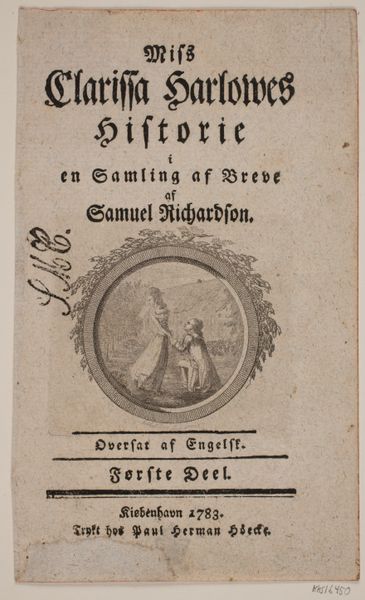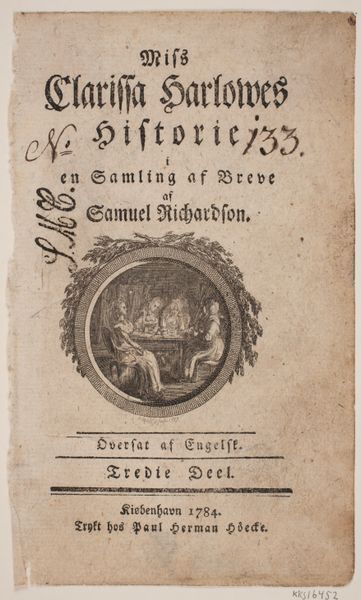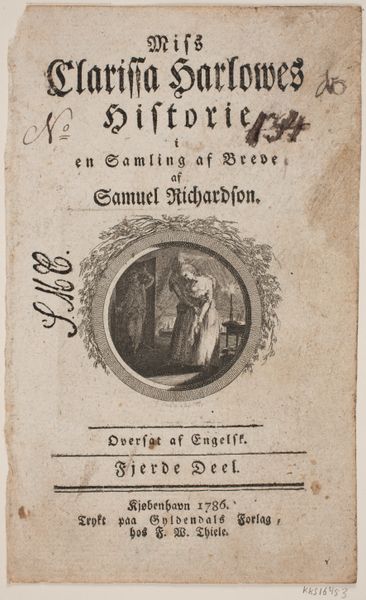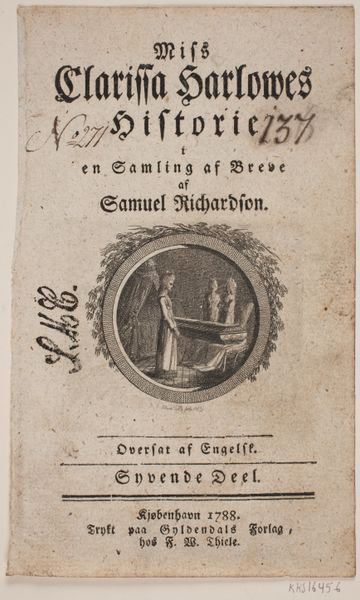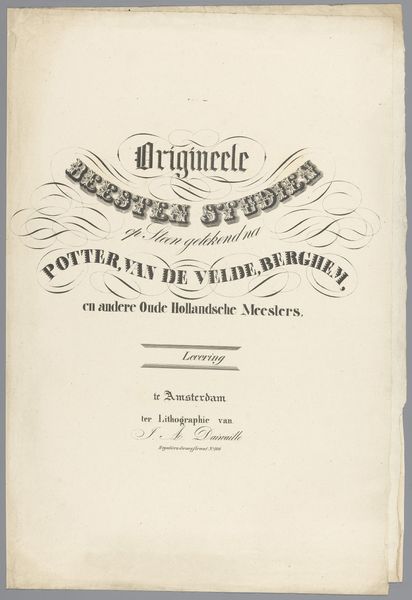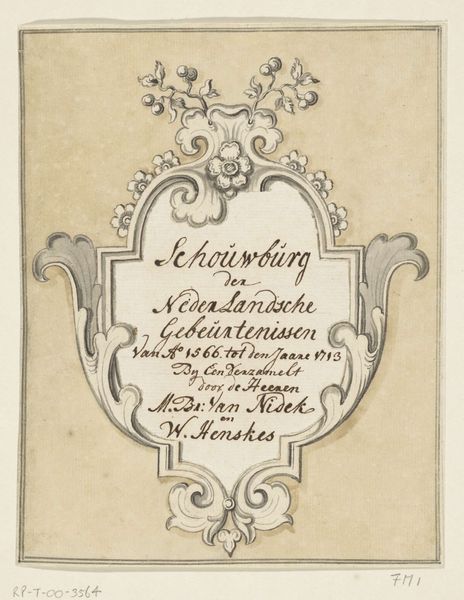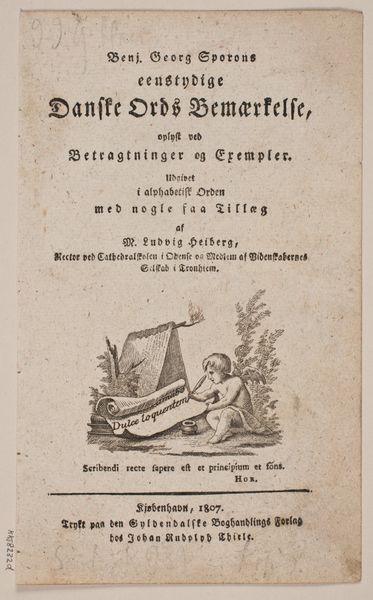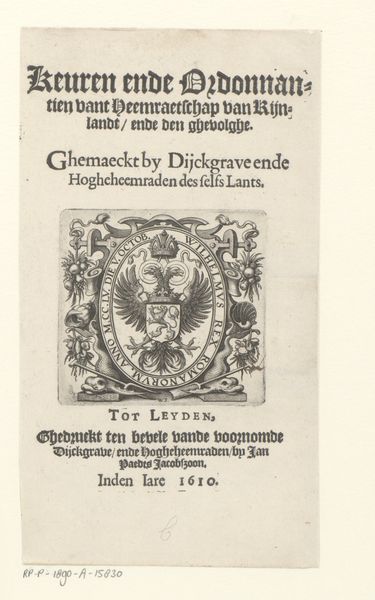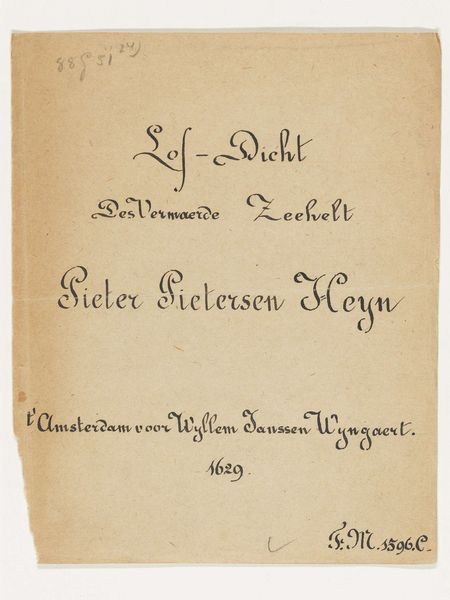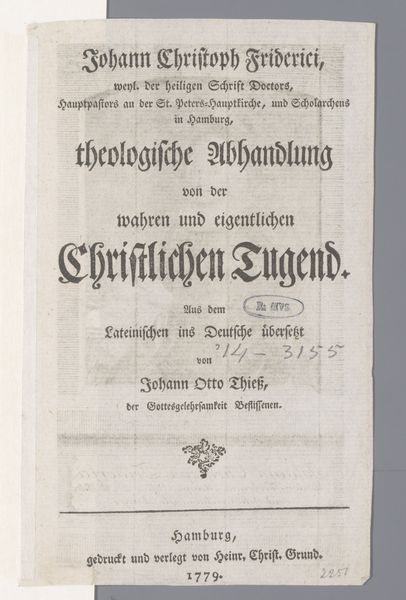
Titelblad med vignet til S. Richardson: "Miss Clarissa Harlowes Historie", anden del 1783
0:00
0:00
graphic-art, print, paper, typography, engraving
#
graphic-art
#
neoclassicism
# print
#
paper
#
typography
#
engraving
Dimensions: 170 mm (height) x 102 mm (width) (bladmaal)
Editor: This is a title page with a vignette for the second part of Samuel Richardson's "Miss Clarissa Harlowe's History," printed in Copenhagen in 1783. It's a delicate engraving on paper. I find the typography fascinating. What can you tell me about it? Curator: This piece offers a glimpse into the book trade and consumption habits of the late 18th century. We see engraving as the primary mode of visual reproduction alongside typography, itself a crucial material technology. Consider the labour involved: the engraver meticulously carving the image and lettering, the typesetter arranging individual pieces of type, the printer operating the press. What does it tell us about access to information and leisure at this time? Editor: That's interesting. I hadn't thought about the actual work behind creating the page itself. So the choice of typography, the quality of the paper… Curator: Exactly! The materiality indicates the intended market. Is it a mass-produced item or something intended for a wealthier clientele? The paper's texture, the clarity of the impression, all speak to production values and intended audience. Furthermore, the Neoclassical style – notice the balanced composition and classical scene in the vignette – would appeal to contemporary tastes and convey a sense of refined culture. Editor: It’s incredible to consider the amount of hands this piece passed through before becoming something to read. Is there something in the social context here to better understand the importance of paper during this time? Curator: Paper becomes a vehicle of power, transmitting not only narratives but also ideological values. Think about who controlled the means of production. Understanding the context illuminates the political weight of publishing in this period. Editor: That's really opened my eyes to the object itself being a statement! Curator: And by examining the materials and methods of production, we move beyond aesthetics to appreciate the social and economic forces that shaped this artwork.
Comments
No comments
Be the first to comment and join the conversation on the ultimate creative platform.

